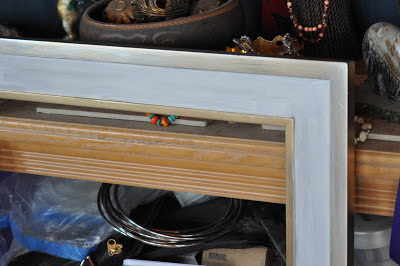 |
| Day 77 - John Dunn Bridge |
One of my photographer buddies and I hit the Rio Grande Gorge area in search of big horn sheep as I mentioned several places on the ethernet. And some of the photos in this weekly review of my 365 day challenge have been featured in other blogs as this area is to be given National Monument status today by President Obama. So rather than duplicating all that I want to focus on a conversation Jessica Duke and I had about photography.
Jessica entered her first official photography show and was one of the accepted photographers. Her photos are three of 500 to be featured. Nothing new for me because I also get beat out constantly by my sister, Deborah Binford Baker. But I digress. She was asked to come up with 50 to 150 words about her photography. BTW for those that have never done this 150 is easier than 50. And I have done it a lot for my painting but not often for photography.
 |
| Day 78 - Water under the bridge |
There are a lot of levels of photography. At one time I was heavily into photo journalism. I was doing freelance writing and supplying at first just background photos for the stories so the paper would know where to send a photographer. They quickly told me not to worry about the directions of how to get to the locations of the photos. Just take the pictures. I just as quickly started looking at photography differently. Even if it was for a travel article I wanted my photographs to be artistic and to capture a moment in time. The top photo catches the early morning light coming down the Arroyo Hondo Canyon to the John Dunn or low bridge over the Rio Grande. Both photos are also about the quiet mirror surface of the water at this point on the river. Just below comes the first little rapid as the river winds down rapidly to the Taos Box.
 |
| Day 79 - Looking Down River |
I live in an area where the purpose of photographers is often the capturing of the beauty of the land. There is in fact so much beauty so often recorded that the competition begins to become about getting a special or elusive moment; a special light and shadow, etc.
 |
| Day 80 - further down the river |
And sometimes it is just about aiming your camera and recording your own personal journey: I have been here. Most of the photos posted in week 12 were in that category. I might submit them as accompaniment to a travel article or use them as basis for a painting. Day 80 was that sort of reference photograph. I like the shape of the river and the bluff behind it; the red willow stalks on the edge. It needs a house or a cross or something more. Day 81 below was taken in that same vein.
 |
| Day 81 - Balancing act |
 |
| Day 82 - Yucca Seed Pod Husk |
Day 82 is more where I think I am heading with photography. It is my newest discovery in a hobby I took up as a child with a simple Brownie camera. No, not necessarily macro photography but capturing the beauty others may not see in objects that are all around us. This simple seed pod devoid of seeds was the one image out of more than 500 I took on this day outing which I explored beyond just simple post processing.
 |
| Beyond day 82 |
Growing as an artist be it in photography or painting or sculpture or writing requires exploration. And it is one reason I left the art fair circuit. Fairs seemed to require that you find your signature and stay there. Entering exhibits and contests with art asks for me to stretch beyond my comfort zone. Yes, I could paint or photograph 500 variations of poppies or churches. Piece of cake. But be it in pixels or paint I want to capture what I have not captured before and what the viewer probably missed on the same path.
Once they announced that the Rio Grande del Norte was to become an National Monument I felt obligated to spend week twelve with the photos I had just taken of that area. Sometimes the photo journalist just takes over. And why not. I can do both or three things if you count reference photos for paintings. One more day remained and I think I would have been remiss if this week of the challenge did not include at least one Big Horned Sheep photo.
 |
| Day 83 - Big Horned Ewe |
Those who have been to Binfords Back Country Photography or to my other blog Sidetracked Charley linked in the right column have seen all the more spectacular photos including the big horned rams but I like this photo because it is a ewe quietly watch us strange people with the big black objects. She seems almost Zen like in her contemplation. And she is so one with her universe. May there always be Big Horns on the basalt cliffs of the Rio Grande.
So what would be my 150 words about my photography? I will let you know when I figure it out.





































